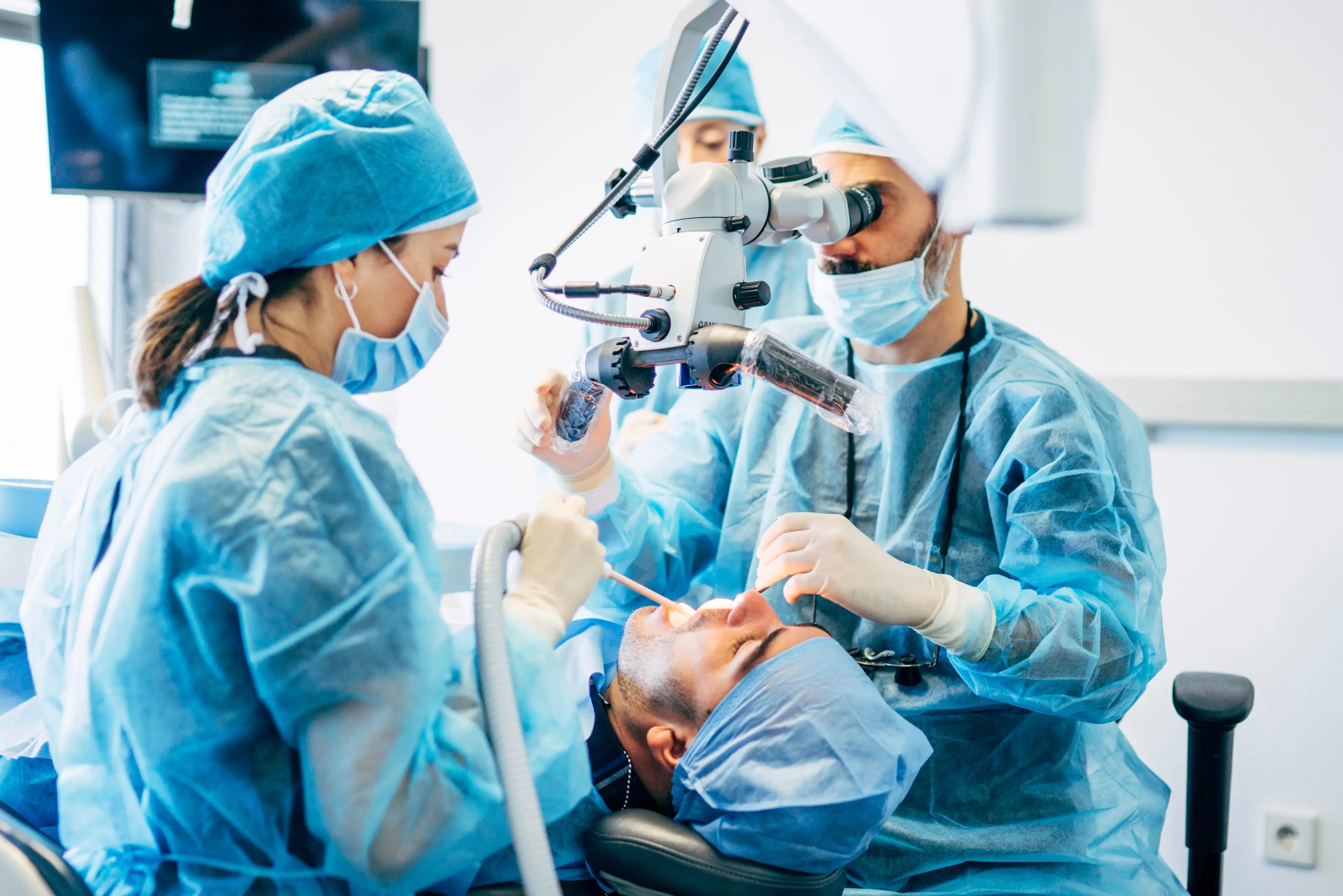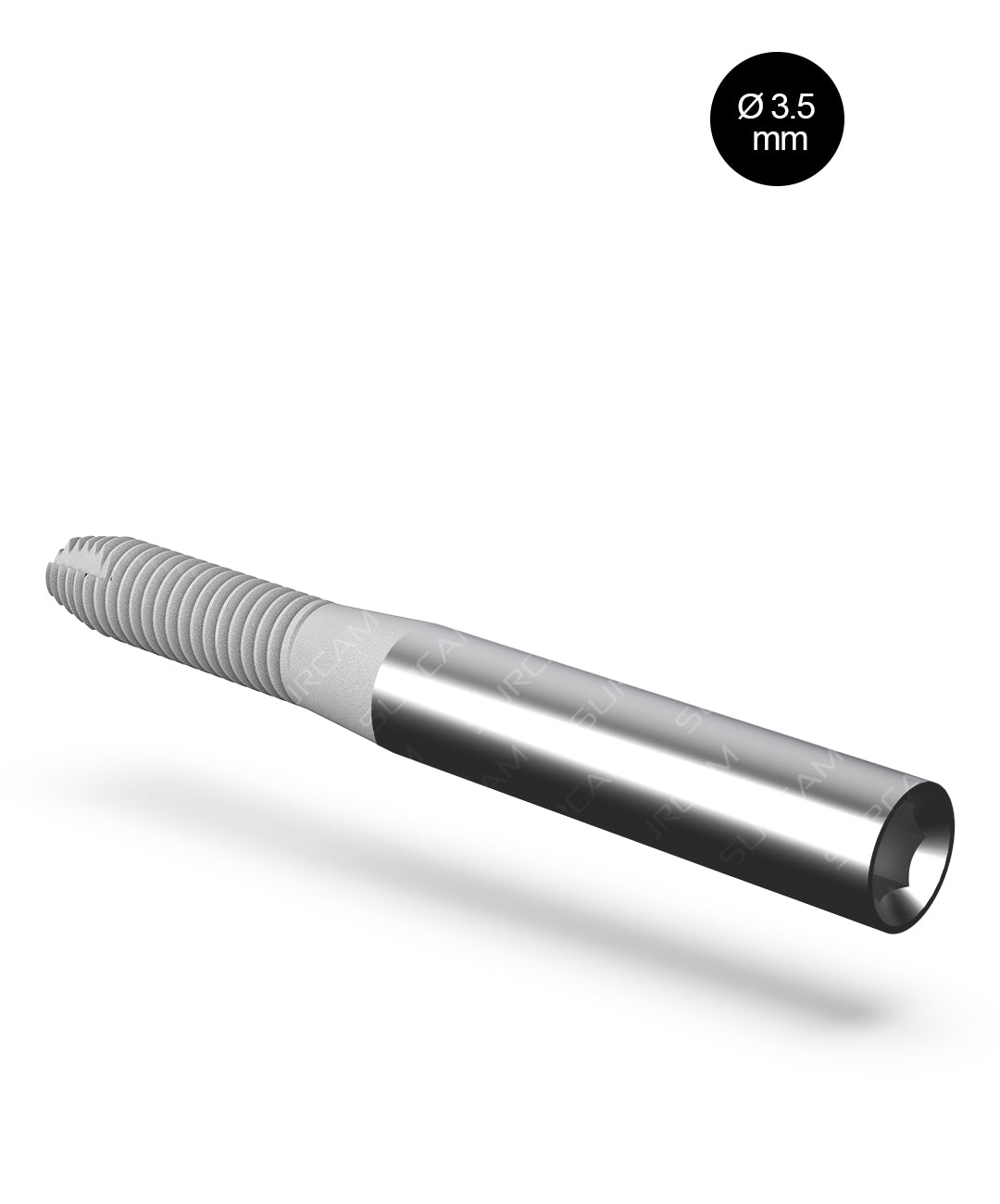Zygomatic Dental Implants: Clinical Overview
What Are Zygomatic Implants?
Zygomatic implants are extra-long implants placed in the zygomatic bone when the posterior maxilla cannot support conventional implants. Instead of relying on resorbed maxillary bone, the implant engages the dense cortical structure of the zygoma, creating immediate mechanical stability for full-arch fixed rehabilitation. These implants typically measure between 30 and 55 mm in length and are used when traditional implants, sinus augmentation, or block grafting cannot provide reliable anchorage.
When Zygomatic Implants Are Indicated
Common indications include:
- Severely resorbed or edentulous maxilla
- Failed sinus augmentation or grafting
- Failure of previous conventional implants
- Rehabilitation after trauma or tumor resection
- Cases where bone grafting is not feasible or not desired
- Situations requiring immediate full-arch loading with limited anterior support
How Zygomatic Implants Work
Zygomatic implants achieve primary stability through engagement of the zygomatic bone. Two main trajectories exist: the traditional intrasinus approach and the modern extrasinus pathway. Current protocols favor the extrasinus approach to reduce sinus complications and achieve improved prosthetic emergence.
- Anchorage in dense cortical zygoma provides high insertion torque between 35 and 45 Ncm
- Emergence typically positioned in the premolar region for full-arch prosthetics
- CBCT-based planning is mandatory due to proximity to the orbit, sinus, and infraorbital nerve
- Immediate loading is often possible when cross-arch stability is achieved
Clinical Workflow
The clinical protocol generally includes the following steps:
- Comprehensive CBCT evaluation and digital planning
- Assessment of sinus and soft-tissue health
- Angled osteotomy preparation toward the zygoma
- Controlled implant insertion without exceeding 45 Ncm
- Placement of Multi-Unit Abutments for cross-arch stabilization
- Immediate screw-retained provisionalization when stability criteria are met
- Transition to definitive full-arch prosthetics after healing
Quad Zygoma Protocol
In cases where anterior maxillary bone is insufficient, a Quad-Zygoma configuration is used. Four zygomatic implants are placed to fully support a maxillary full-arch framework without the need for anterior implants.
Clinical Advantages
- Avoids sinus lifting and block grafting procedures
- Supports immediate fixed provisionalization
- Provides high stability in severely atrophic maxillae
- Reduces overall treatment time and surgical morbidity
- Long-term survival rates documented above 95 percent
- Restores esthetics and function for patients previously considered non-candidates
Risks and Considerations
Potential risks include:
- Sinusitis
- Infraorbital nerve paresthesia
- Oroantral or orosinusal communication
- Soft-tissue complications at the implant head
- Rare orbital involvement
Experienced surgical technique, extrasinus placement, and detailed planning significantly reduce these complications.
Candidate Assessment
Ideal candidates include:
- Patients with severe upper jawbone resorption
- Individuals not eligible for grafting or who prefer to avoid grafts
- Patients requiring immediate full-arch prosthetic rehabilitation
- People with failed grafts, failed conventional implants, or previous maxillary surgery
CBCT analysis is essential for evaluating zygoma anatomy and safe implant trajectory.
Prosthetic Protocol and Multi-Unit Integration
Zygomatic implants are typically restored via Multi-Unit Abutments. This enables cross-arch frameworks, predictable torque retention, improved hygiene access, and stable long-term prosthetic outcomes.
Long-Term Performance
Published research demonstrates survival rates between 96 and 98 percent over 10 to 12 years. Extrasinus protocols have shown reduced sinus complications and improved prosthetic emergence.
Why Surgeons Choose Surcam Zygomatic Implants
- Precision-machined implant design for predictable trajectory control
- Optimized cortical engagement for stable insertion torque
- Compatible with Surcam Multi-Unit Abutments for full-arch frameworks
- Platform-matched prosthetic ecosystem for predictable seating
- Designed for both intrasinus and extrasinus approaches
- Manufactured from Titanium Grade 5 with strict tolerances
Surcam zygomatic implants support immediate loading and integrate seamlessly into digital and analog full-arch workflows.









